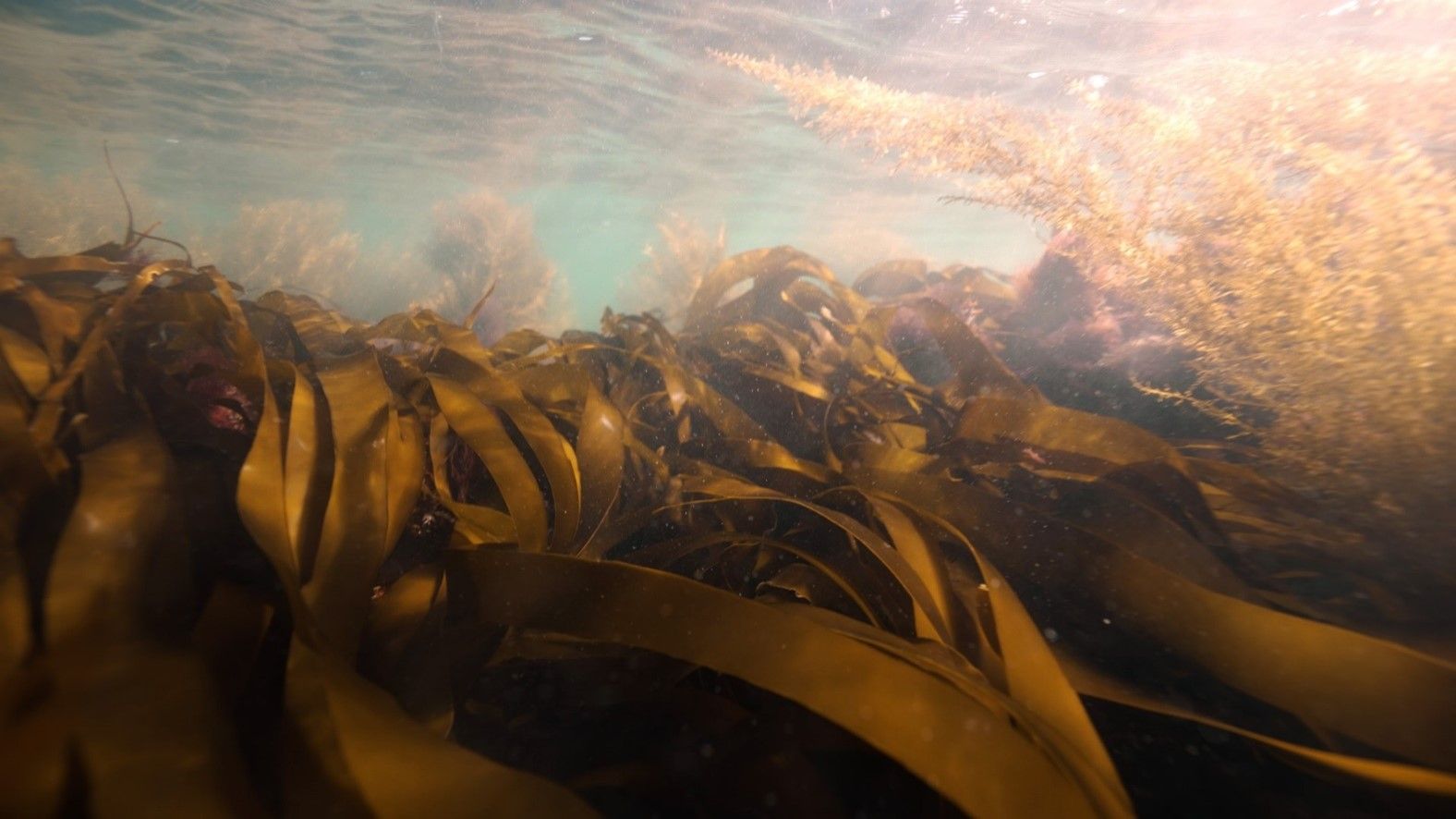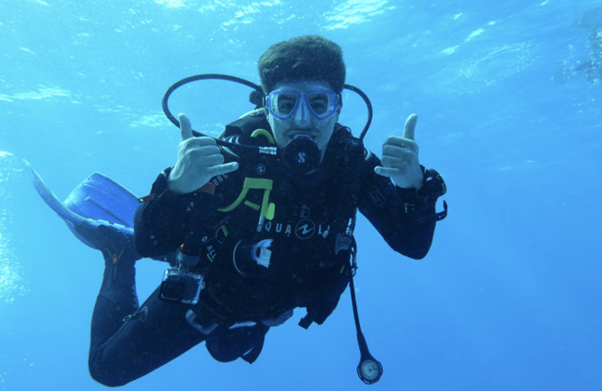Are invasive species preventing kelp recovery in Sussex?

Oarweed kelp in bognor regis, a picture taken on the 24th of May 2023. The seaweed in the background and on the right is wireweed, one of the invasive species which outcompetes kelp. Image credit Marianne Glascott
Kelp forests
Kelp are brown algae that often grow as large underwater forests in cold, shallow waters off the coast of England. These forest habitats are incredibly useful in the battle against climate change. They absorb high amounts of carbon dioxide, protect the coast, and are incredibly biodiverse, making this habitat as valuable as the Amazon rainforest.
Southern England is home to three species of kelp: tangle, oarweed, and sugar kelp, all once highly abundant in the waters of Sussex. In 1987, the Great Storm hit the south coast, creating an unstable environment, and the kelp forest declined by 90% overnight. The forest still hasn’t recovered, in part because trawlers have been allowed to fish where the kelp once thrived. Now oarweed is classified as vulnerable, and tangle and sugar kelp as near threatened.
The Sussex Kelp Recovery Project was successful in having a trawling bylaw passed in 2021 and there are now signs of the habitat starting to recover. But we still don’t know enough about kelp forests. Gaining a better understanding of this habitat, and the ecology of its species, is vital to its recovery. The more we know, the better placed conservationists will be to take well-targeted measures to help the kelp forests of South England to recover.
Focussing on invasive species
A key threat to kelp forests is invasive species. Marine invasive species are introduced by humans accidentally through ballast water discharge from ships or intentionally for aquaculture. Once introduced, they can proliferate rapidly and significantly influence the health and structure of kelp forests. New species in an ecosystem result in new interactions between the native and invasives. This can disrupt the equilibrium as competition and predation between species alters food webs and modifies the habitat’s physical structure.
PTES’ new intern Francesco Marzano is investigating how non-native species are impacting kelp forests. His project focuses on invasive species that threaten kelp, including wire weed, a seaweed native to Asia, first spotted in the UK in 1973. It grows rapidly, forming dense mats that create shade, displacing kelp. Pacific oysters, initially introduced to the UK in the 1890s for aquaculture, have since formed large aggregations that carpet the seabed and prevent kelp growth. Slipper limpets, accidentally introduced with Pacific oysters, attach to kelp fronds and prevent it from growing properly. Japanese skeleton shrimp, an opportunistic feeder first sighted in England in 2002, also threatens kelp and will be another focus species for Francesco.
Obtaining critical information
Francesco will use the data collected by a former PTES intern, Saul Mallinson, and the Sussex Kelp Recovery Project team. He’ll identify which areas invasive species have been spotted and then analyse videos collected in 2022 and 2023 by the Sussex Inshore Fisheries and Conservation Authority (IFCA). The IFCA towed cameras over the seafloor, collecting thousands of images of species living on and above the seabed. Francesco will record all the invasive species he spots, how abundant they are and where they’re found. To fully understand the threats they cause, he’ll don his wetsuit and flippers and freedive with his GoPro camera to the areas the invasive species have been sighted and carry out searches along set transects. Francesco hopes these two sets of data will help him confirm which invasive species are in Sussex waters and whether they’ve expanded in range since the start of the kelp recovery project. He’ll also check to see if they’re present in historical kelp hotspots, thus preventing kelp re-establishment. His work will be critical in helping inform the future of the Sussex Kelp Recovery Project.
This project is only possible thanks to our generous donors. Can you help by donating today?

